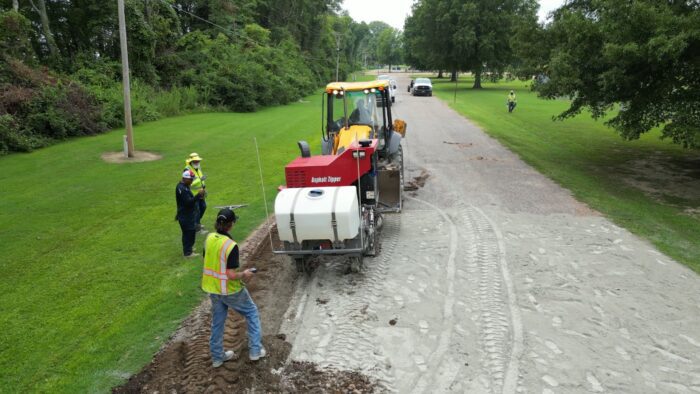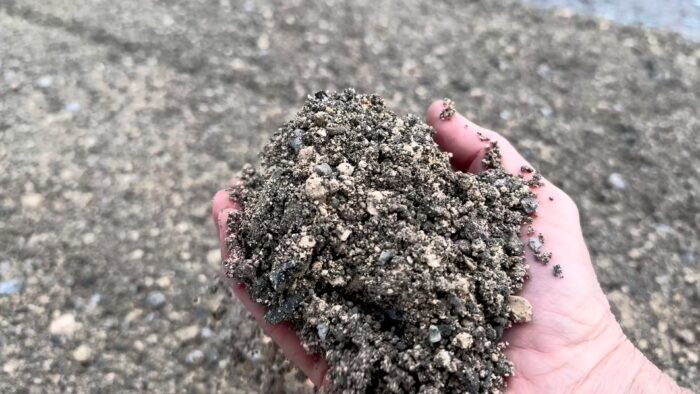Repairing roads and streets is an ongoing battle for communities of all sizes. One unique challenge road maintenance crews face is hiring enough workers.
A larger city might have money for payroll but struggle to find road construction workers. The United States Bureau of Labor projects a 7.94% growth in highway maintenance worker jobs over the next decade. With the average age of a highway worker at 44, this struggle will continue to intensify.
A smaller city might only have budget for a 2-5 person road crew. For them, it’s challenging to complete all their pothole patching jobs and asphalt road maintenance projects.
Either way, using the best processes and equipment can help you maximize your road maintenance capability. Here are six ways to make long-term road repairs with a small crew.
Get the Right Equipment

With a road reclaimer, you don’t need a large road crew, and you can do much more than an occasional road patch. Contractors often use large, self-contained asphalt reclaimers. However, their size and cost make them out of reach for most communities.
Towns might not be aware that they can do the same road repairs for a fraction of the cost with portable asphalt recycling attachments. These smaller and more affordable machines make it quick and easy to do everything from small patches to full road repairs.
Surprisingly, they also have the speed and power to reclaim up to two miles of worn out roads per day. They are also easy to transport. You can pull them to the job site behind a regular work truck and quickly connect to the backhoe or loader you already own.
Do Work In-House with Simple, Full Depth Reclamation Process
Asphalt reclamation or full-depth reclamation might seem overwhelming for a small road crew. However, with the right reclaimer machine, it is a simple process that even a crew of just two workers can do. One member of the crew drives the loader / backhoe, and the other crew member acts as a groundsman.
Road reclamation uses a road reclaimer to pulverize the road surface while mixing it into the road base material. This stabilizes the road base which prevents future potholes and alligator cracking. Next, crews use a grader to shape the road, a roller to compact it, and apply a new chip seal or asphalt surface.
The resulting road and road base will generally last three to five times longer than mill and fill or typical pothole repairs. To learn more about full depth reclamation, click here.
Recycle Asphalt to Avoid Extra Steps

However, what most cities don’t always realize is that most potholes and alligator cracks are actually a result of road base failure. They also learn over time that most pothole repairs and crack sealing methods only temporarily fix your problem. To repair your roads long-term, you will need to stabilize the base layer.
Traditional asphalt removal methods require sawcutting, chunking, loading, hauling and asphalt disposal. Full depth reclamation (FDR) turns the worn asphalt surface into recycled asphalt product (RAP).
This reclaimed asphalt pavement can then be used to improve the existing base or as road base elsewhere. By recycling the road and using existing materials, communities avoid multiple steps and significantly reduce their manpower / equipment needs. They also eliminate or reduce the need to bring in additional aggregate material for soil stabilization.
Make Road Repairs that Last
If you lack manpower or budget, you are looking for time and cost savings. Repairing only the surface layers of a road with asphalt milling might seem like a budget friendly option.
With a portable road reclaimer attachment, a crew of two or three workers can pulverize the road surface and blend it with the base. This reclaimed material helps stabilize the existing base and eliminates the reappearance of potholes.
By making lasting road repairs, communities can save a tremendous amount of money and time. This will allow them to make significant improvements on their roads and be more environmentally friendly.
Do Work on Your Own Schedule

Owning a road reclaimer attachment gives you the flexibility to set your own road repair schedule. Street crews in small towns have many responsibilities, including repairing roads. An asphalt recycling attachment allows these crews far greater flexibility and ease in completing projects.
They can pull their reclaimer to the jobsite behind a work truck and connect it to a backhoe or loader in a matter of minutes. This also gives crews the flexibility to work around other responsibilities they might have.
Use the Same Equipment for Utility Trenching/Gravel Roads
A road reclaimer attachment isn’t just an asphalt pulverizer. It is also ideal for gravel road maintenance. The same principals apply to gravel road repair. The process involves a road reclaimer mixing the gravel with the road base, creating a new stable base.
If you have utility lines under your streets, the same road reclaimer attachment also acts as an asphalt grinder. Instead of saw cutting, chunking, loading and hauling asphalt from utility trenches, you can turn it into recycled material. This spec-comparable asphalt material is also great for trench backfill.
Small road crews can operate without size or budget limitations. With the right tools, especially portable road reclaimer attachments, small teams of two to five people can repair potholes and perform a wide range of full-depth road reclamation projects.
Conclusion
By working smarter instead of harder, communities can make lasting, cost-effective road repairs. They can reduce reliance on outside contractors and manage their road maintenance schedules better. With these strategies in place, even the smallest crews can maximize their impact and keep roads smoother longer.
Key Takeaways
- Small crews can do full-depth reclamation jobs.
- Portable road reclaimers are a game-changer for communities of all sizes.
- Full-Depth Reclamation extends road life.
- Recycling asphalt saves time and resources.
- In house road repairs offer flexibility.
- Multi-use equipment increases ROI.